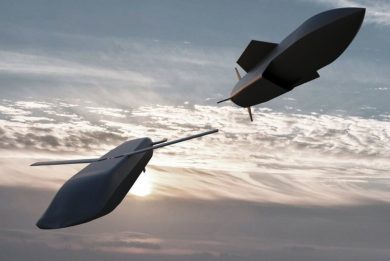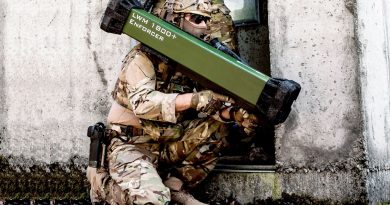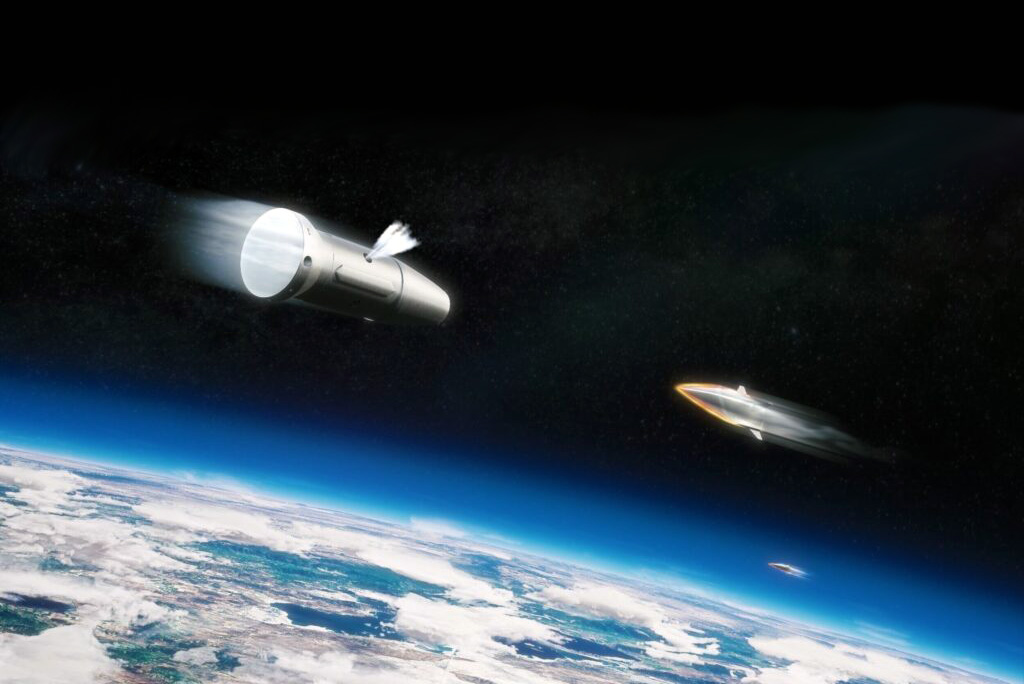
MBDA details its activities to counter emerging threats
Speaking to international media at MBDA Deutschland HQs facility in Schrobenhausen, Dr. Dirk Zimper, Director Future Systems and member of the board of MBDA Deutschland focused on main emerging threats and related technology trends providing an overview of how MBDA in general, and the national company more specifically, are addressing them, leaving to his colleagues responsible for the different areas and programmes to detail the respective areas and solutions
“Talking about technologies trends and on-going programmes, related to threats that we currently encounter, we see the increasing use of unmanned systems, and in the near future we will even see swarms that will tend to saturate air defences,” Dr. Zimper explained.
Elaborating on hypersonic threats, he immediately pointed out that the Kh-47M2 Kinzhal which, according to Ukraine and US, has been shot down in the conflict, “is not a hypersonic weapon system. Full stop. It is an air launchable hypersonic ballistic missile. It has very limited manoeuvrability. A hypersonic weapon system is characterized not only by hypersonic speed, but also by its capacity to manoeuvre within the atmosphere based on aerodynamic properties,” Dr. Zimper outlined, before mentioning the Chinese DF 17 and the Russian Avangard, which according to their design and configuration, “represent a credible threat, even if we are not sure 100% if they are already in service or close to be in service,” he continued.
He also highlighted the future importance of the interconnectivity between air platforms, manned and unmanned, and weapon systems in the future battlefield and operating environment, in a multidomain perspective. “This is something we consider when it comes to technology development and innovation.”
Countering new threats: MBDA challenges
“When we talk about the technology development within MBDA, we would like to support the warfighter. It’s good to have ideas, but we need to bring these ideas actually in the final product,” highlighted Dr Zimper stressing the need to quickly develop and field new capabilities.
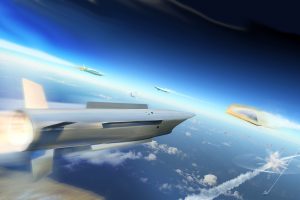
Focusing on hypersonic threats, he highlighted how MBDA has already invested a lot in technology, research and development on how an interceptor against such threat might look like. The company is contributing with its knowledge in the specific sector as leading industry in the HYpersonic Defence Interceptor Study 2 (HYDIS²), the European area protection counter-hypersonic programme which is currently in the concept and technology maturation phase. Selected by the European Commission in July 2023 the HYDIS2 brings together 19 partners and more than 30 subcontractors from 14 European countries. The three-year concept phase under the frame of the European Defence Fund and PESCO Twister, aims at developing several “interceptor-concepts” that will be submitted for selection, prior the development phase. The current phase also aims at maturing critical technologies with focus on operational requirements of the partner nations, and finally the unification of industrial and science expertise to establish a key-competence for Europe.
Specifying the know-how brought by MBDA Germany, the national company “we are investigating, for example, a very unique capability that we have in Bayern-Chemie, which is the ramjet technology, how can we use it and further develop it in order to counter hypersonic threats. However if you think about defence from hypersonic threats, you always need to consider the entire architecture, which is something we are also looking at. We are doing that within the HYDIS² programme getting expertise from various nations companies, research organizations, in order to address that challenge.”
Laser
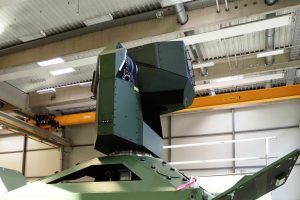
Highlighting the latest developments MBDA Deutschland has done in the laser sector since 2008, and the various activities which led to the successful conclusion the naval laser system demonstrator trials by the industrial team made of Rheinmetall and MBDA, under the supervision of the BAAINBw, “the very specific and unique technology we developed within MBDA which is crucial to bring the energy actually into the target is the tracking capability. It involves a lot of algorithms involved, and needs to have a great understanding of the software to put everything together, and that’s actually one of the main competencies we developed within MBDA.” Dr. Zimper pointed out presenting different laser applications and concepts, including one in a pod installed under the wings of a Eurofighter Typhoon fighter, leaving to Doris Laarman, Head of Laser Activities at MBDA Deutschland to deal with latest development in the specific sector.
SHARCS
“Most of you would agree that within Western nations we have a tendency to do a lot of paperwork, but what you need to do actually is to conduct experiments, go to technology, demonstrate and collect experience and then bring it into the final product,” the MBDA representative explained, referring to the need of new tools to satisfy urgent development requirements. MBDA Deutschland developed an aerial technology demonstrator platform that can be used for maturing and testing technologies. “The Small Highly Adaptable Remote Carrier System (SHARCS) is not a product. It is actually a technology demonstrator that we are using for experimenting and investing in various technologies that are usable for Army, Navy and Air Force applications depending on what the specific requirement is asking,” Dr Zimper explained.
The SHARCS composite airframe structure, provided by Premium Aerotec, is characterised by a low-observable design, It has a length of approximately 3 meters, a low negative (forward) sweep wing with a span of around 3.4 meters, a peculiar tailplane configuration with two “V” and two horizontal rudders which according to MBDA ensure bank-to-bank steering capabilities, a landing gear for reusability, and is powered by a small jet engine located at the rear. The SHARCS has a maximum take-off weight of 150 kg, including a payload of up to 30 kg, can reach a speed range between Mach 0.1 and Mach 0.3, and a 1,000 meters ceiling. The unmanned vehicle is characterised by a modular nose bay capable of accommodating different payloads which technologies are being tested and matured alongside airframe materiel, system control and communications, among others. “With the aim of conducting also manned-unmanned teaming (MUM-T) operations, the SHARCS maiden flight should take place later this year,” the MBDA representative unveiled.
Space
Space is an upcoming domain for MBDA. Highlighting its and safety for the everyday life, Dr. Zimper also provided a few examples on how the same domain is being used by adversaries to negate the use of it, taking the action in and out of the atmosphere, mentioning the anti-satellite capability of Russian and Chinese armed forces, alongside the hacking by Russia of a satellite system -just an hour before the start of operations in Ukraine, to switch off command and control capability. “We have seen positive elements of space as well. When Elon Musk provided Starlink satellite constellation access to Ukraine, they immediately acquired a command and control capability which was not there before, which helped them a lot”. Looking to these adversaries capabilities, the Western countries have developed countering actions to protect their space assets and respond actively to these threats.
“This is where MBDA comes into place as well, because we can develop systems used within the electromagnetic domain and we can use as well technologies to protect these kind of infrastructures in space or on earth, and that is something we are currently considering. First of all, using space as an enabler for core business performance and capabilities, for example, communication technologies, space as a new warfare theatre and for protecting these assets and of course, we can use for example, central capabilities to bring them into space and bring additional capabilities on to the orbit,” he explained.
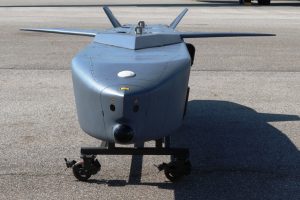
Dr. Zimper provided an example of how MBDA can use space assets for communications, command and control showing new satellite constellations that can provide space based two way datalink for weapon systems, such as MBDA’s Taurus. or inter satellite laser links to enable near real-time communication. Space can also be used for detecting threats; for example, LEO satellite constellations allow tracking hypersonic threats, and in general can act as space based early warning systems. Space is also a key enabler for allowing navigation in GPS denied environments thanks to new satellite constellations such as the European IRIS².
Space can also be seen as a new warfare theatre where space assets need to be protected against threats in-orbit. Without providing further details, a slide projected during the presentation was showing three main missions being considered by MBDA: ‘responsive launch’, ‘on orbit staging’ and ‘on satellite staging’. The first is connected to the need to launch something in orbit in response to hostile actions. MBDA France has proposed Orbital Express, a two to three stage fighter-launched responsive space launcher that can put into orbit a LEO satellite for urgent needs. The second sees the placement of a guardian satellite on selected orbits, or near high value assets, either to defends one asset or being able to move to adjacent orbits to defend multiple assets. Finally defensive systems might be installed on future high value assets, these effectors allowing engaging on-orbit threats, temporarily disabling or de-orbiting them. According to the few released details, MBDA France and UK have been envisaged a Key Satellite Protector (KSP) with de-orbiting capability. In this overall contest, MBDA Deutschland, through its Bayern-Chemie subsidiary, has studied a reactive space launch option together with the DLR (Deutsches Zentrum für Luft- und Raumfahrt), Germany’s research centre for aeronautics and space, alongside the Red Kite propulsion for civil demonstration and trials, and the Satellite De-Orbiting Propulsion system.
Being asked about how much MBDA is funding internally research and development and what the group can put on the table on the activities in terms of technology maturation, Dr. Zimper pointed out that innovation and technology maturation cost a lot. “Overall R&D is around €100 million, which gives an idea of our investment.”
Photos courtesy MBDA


